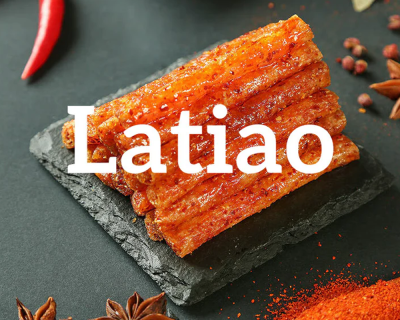
Dry Goods and Dried Fruits Packaging: Techniques, Materials, and Technology Insights
Overview of Dry Goods and Dried Fruits Packaging
Dry goods and dried fruits, such as nuts, raisins, beans, grains, and dehydrated vegetables, require packaging that preserves freshness, prevents contamination, and extends shelf life. Unlike fresh produce, these products have lower moisture content but remain sensitive to air, humidity, and light, which can cause flavor loss or nutrient degradation. The packaging process for these products combines barrier protection, portion control, and attractive presentation, ensuring both product quality and market competitiveness. With advances in automation, modern packaging lines now integrate weighing, filling, sealing, and labeling to improve efficiency and consistency.
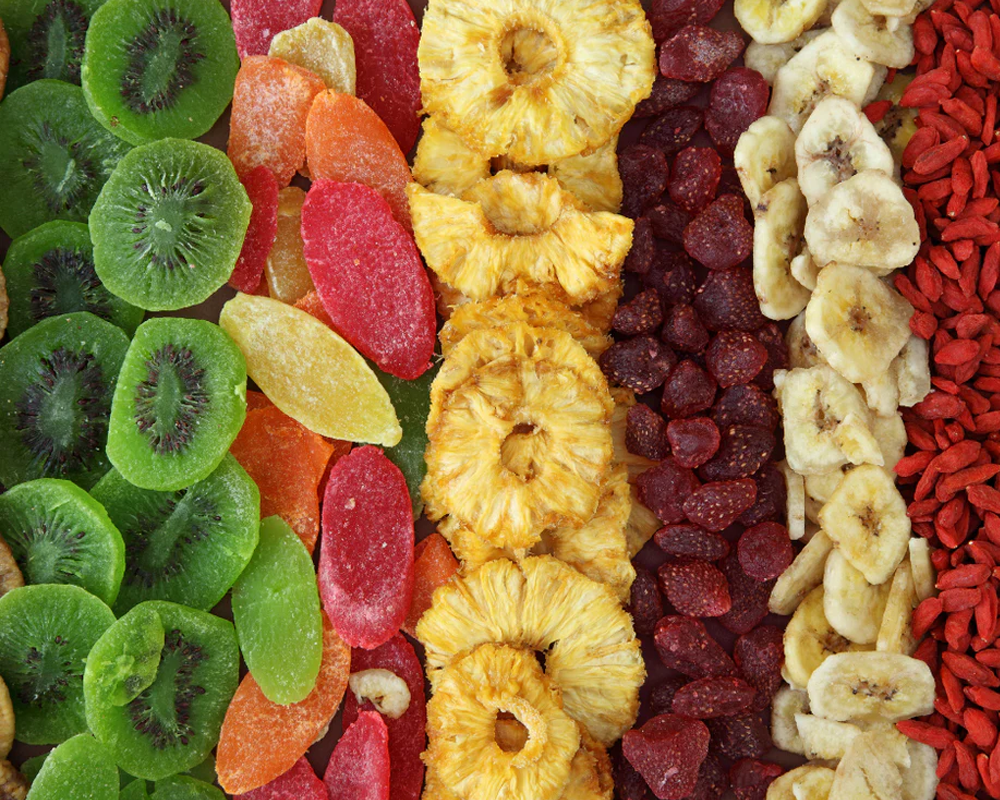
Key Functions of Packaging for Dry Goods and Dried Fruits
Protection Against Moisture and Oxygen–Prevents texture changes and microbial growth by using high-barrier materials.
Extended Shelf Life–Keeps products fresh for longer periods through vacuum sealing or modified atmosphere packaging (MAP).
Product Integrity–Prevents breakage or crushing during transportation and handling.
Portion Control and Convenience–Enables single-serve packs, resealable options, and bulk packaging.
Compliance and Traceability–Ensures proper labeling with nutritional facts, allergen information, and batch codes.
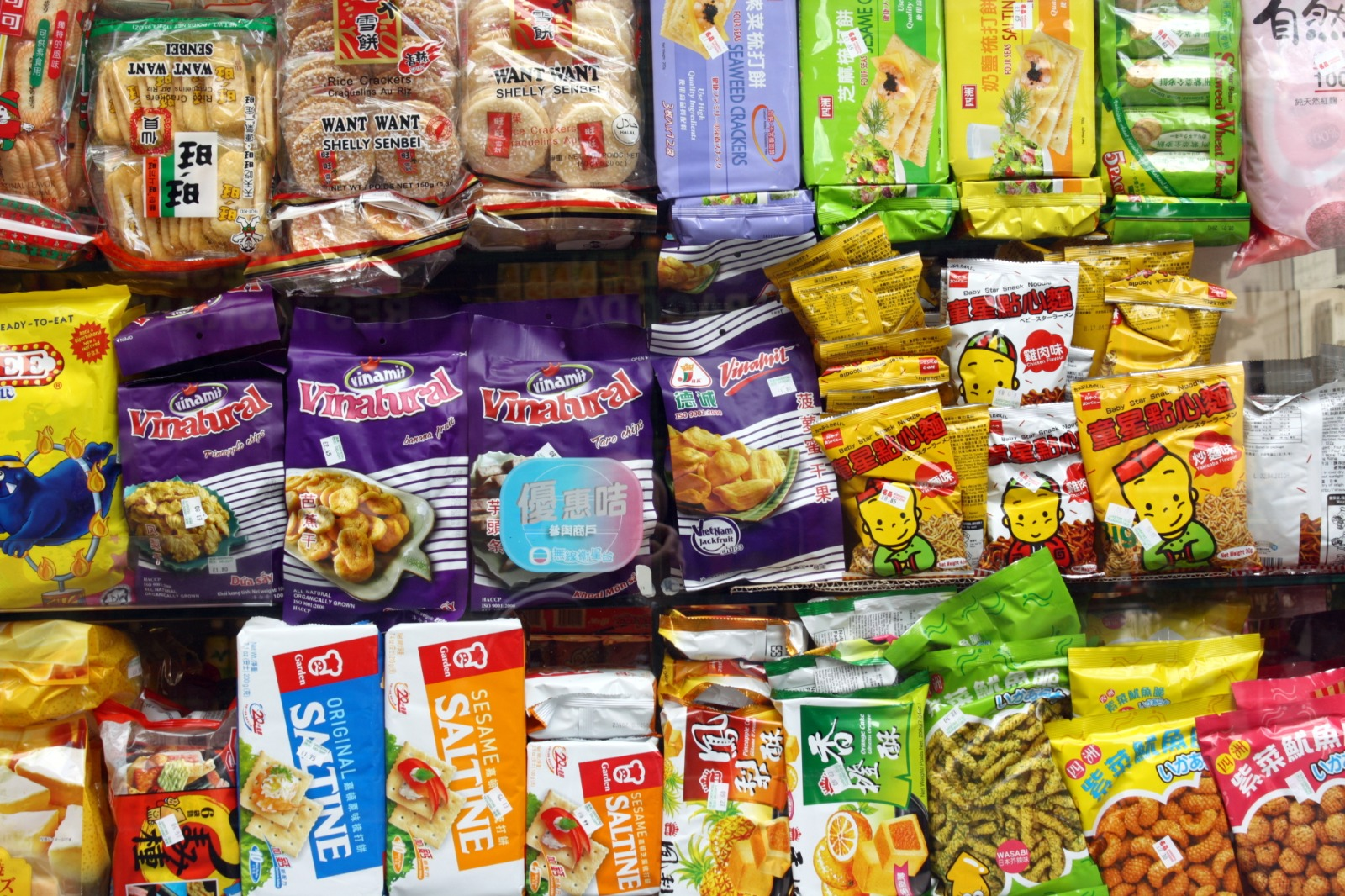
Packaging Materials and Their Properties
Packaging for dry goods and dried fruits is selected based on protection needs, branding goals, and sustainability requirements. Flexible pouches made from laminated films (PET/PE, BOPP/CPP, or aluminum foil laminates) are widely used due to their excellent barrier properties and printability. For premium products, stand-up pouches with resealable zippers offer convenience and repeated use, while transparent windows allow consumers to see the product. Paper-based pouches with inner linings are increasingly adopted for eco-friendly branding. In bulk distribution, multi-layer woven bags and corrugated boxes provide strength and stackability.
Material Type | Barrier Properties | Sustainability | Typical Applications |
PET/PE Laminates | High moisture & oxygen resistance | Moderate | Stand-up pouches, pillow bags |
BOPP/CPP | Good clarity, moisture protection | Moderate | Flow packs, pillow bags |
Aluminum Foil Laminates | Excellent barrier to light & gases | Low (but recyclable) | Premium dried fruit packaging |
Kraft Paper Laminates | Good for branding, moderate barrier | High | Eco-friendly pouches |
Woven Polypropylene | Strong, low barrier | Low | Bulk beans, grains |
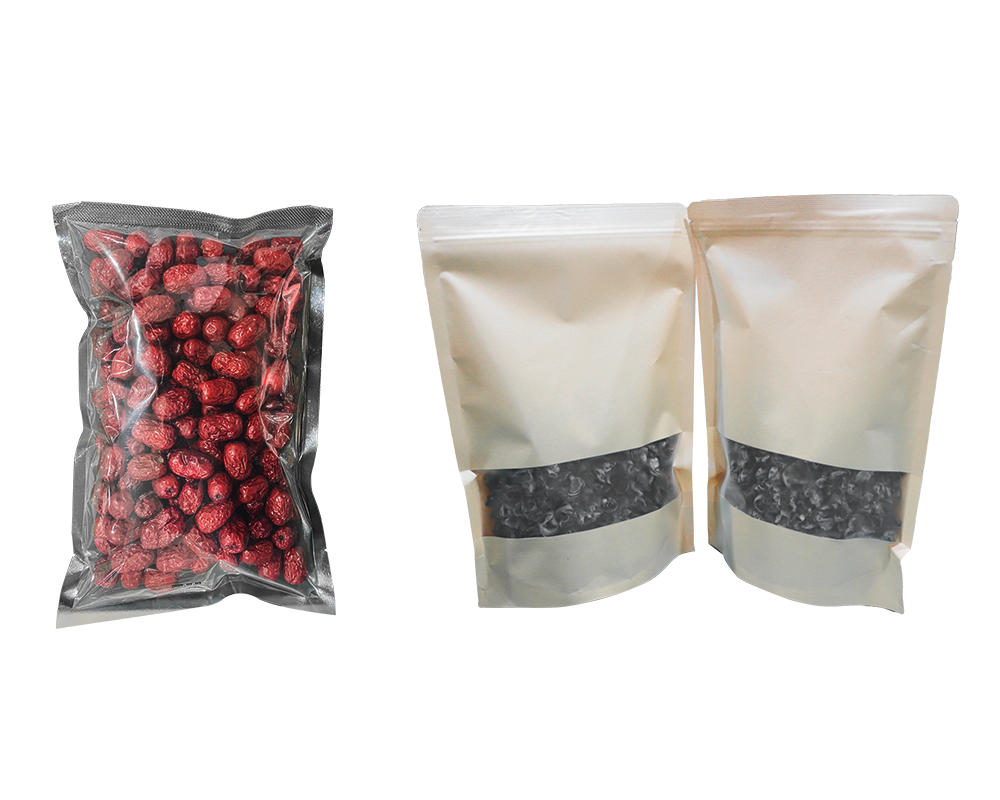
Common Packaging Formats
Pillow Bags–Simple, cost-effective, suitable for small to medium quantities.
Stand-Up Pouches–Resealable, high shelf visibility, great for retail.
Quad-Seal Bags–Stable, premium look, ideal for larger volumes.
Vacuum Packs–Removes air to extend shelf life.
Bulk Bags–Used for wholesale distribution.
Automation in Dry Goods and Dried Fruits Packaging
Automation has transformed the packaging of dry goods and dried fruits, reducing labor costs and ensuring consistency. Vertical form-fill-seal (VFFS) machines are common for pillow bags, while pre-made pouch packaging machines are preferred for premium products. Integration with multihead weighers ensures precise portioning, and labeling systems help meet traceability requirements. Modified Atmosphere Packaging (MAP) systems are often used to replace oxygen with nitrogen, delaying oxidation.
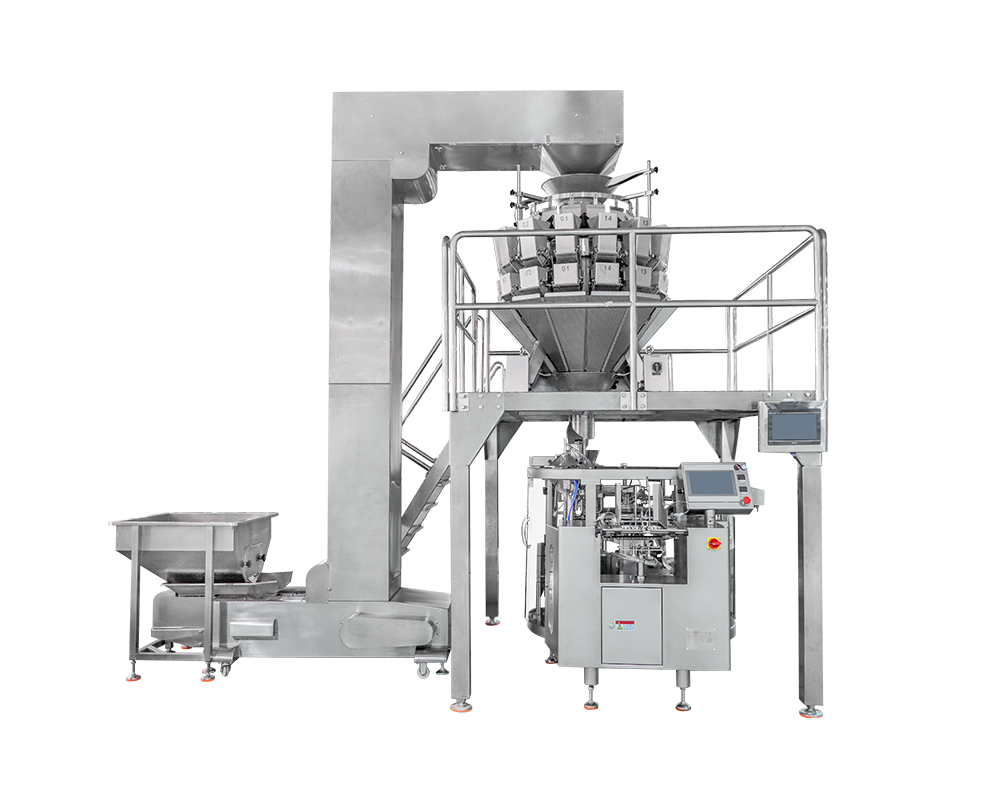
Case Study: Pre-Made Pouch Packaging for Premium Mixed Nuts
A snack manufacturer sought to improve both the appearance and shelf life of their premium mixed nuts. They adopted a pre-made pouch packaging machine integrated with a 14-head multihead weigher and nitrogen flushing system. The machine automatically picks, fills, and seals the pre-made stand-up pouches with a resealable zipper. The nitrogen flushing prevents oxidation, keeping the nuts crisp for over six months. A labeling module applies high-resolution product labels with nutritional facts and QR codes for traceability. This packaging solution not only enhanced shelf appeal but also improved operational efficiency by 35%, allowing the company to meet increasing demand without adding extra labor.

Future Trends in Dry Goods and Dried Fruits Packaging
The packaging sector for dry goods and dried fruits is moving toward sustainability, smart packaging, and enhanced convenience. Biodegradable films and recyclable laminates are gaining popularity as brands aim to reduce their environmental footprint. QR code-enabled smart labels allow consumers to access product origin and quality information. Flexible packaging formats with resealable options are expected to dominate the retail segment, while automation will continue to improve production efficiency and reduce waste.
Get the latest price? We'll respond as soon as possible(within 12 hours)








